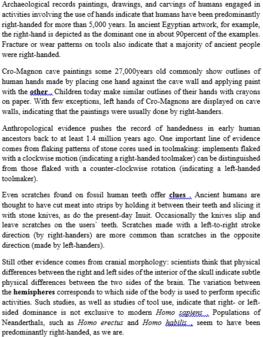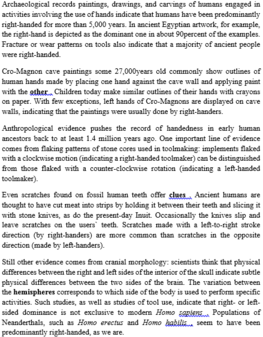Read the following passage and mark the letter A, B, C, or D on your answer sheet to indicate the correct answer to each of the questions from 36 to 42.
Arid regions in the southwestern United States have become increasingly inviting playgrounds for the growing number of recreation seekers who own vehicles such as motorcycles or powered trail bikes and indulge in hill-climbing contests or in carving new trails in the desert. But recent scientific studies show that these off-road vehicles can cause damage to desert landscapes that has long-range effects on the area’s water-conserving characteristics and on the entire ecology, both plant and animal. Research by scientists in the western Mojave Desert in California revealed that the compaction of the sandy arid soil resulting from the passage of just one motorcycle markedly reduced the infiltration ability of the soil and created a stream of rain runoff water that eroded the hillside surface. In addition, the researchers discovered that the soil compaction caused by the off-road vehicles often killed native plant species and resulted in the invasion of different plant species within a few years. The native perennial species required many more years before they showed signs of returning. The scientists calculated that roughly a century would be required for the infiltration capacity of the Mojave soil to be restored after being compacted by vehicles
It can be inferred that which of the following people would probably be most alarmed by the scientists’ findings?
A. Historians
B. Mapmakers
C. Farmer
D. Ecologists





Đáp án D
Câu hỏi: Có thể suy ra rằng những người nào sau đây có lẽ sẽ bị báo động nhất bởi những phát hiện của các nhà khoa học?
Historian: nhà sử học
Mapmaker: người vẽ địa đồ
Farmer: nông dân
Ecologist: nhà sinh thái học
Dựa vào nội dung của bài → đáp án D phù hợp nhất